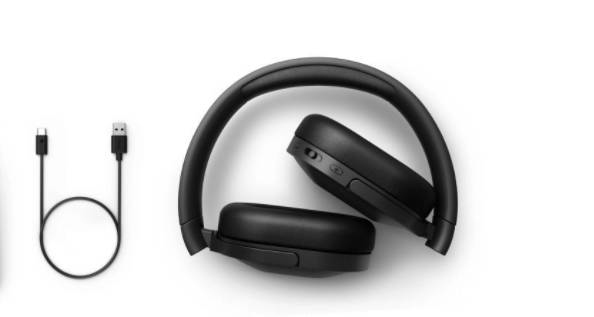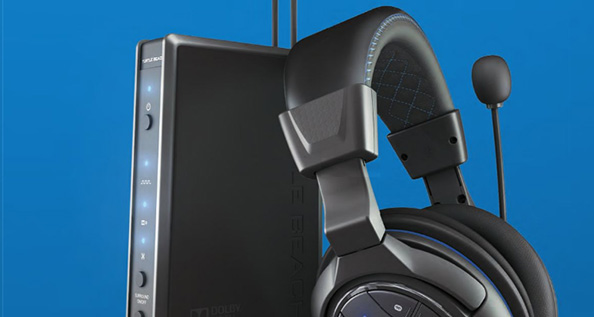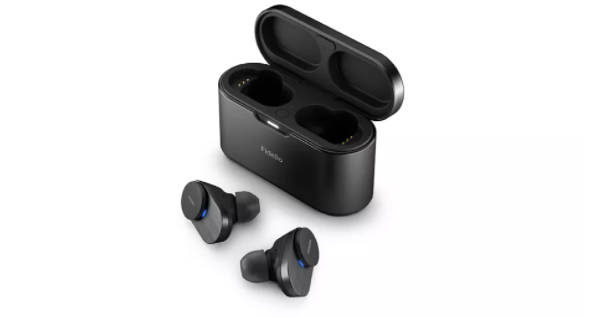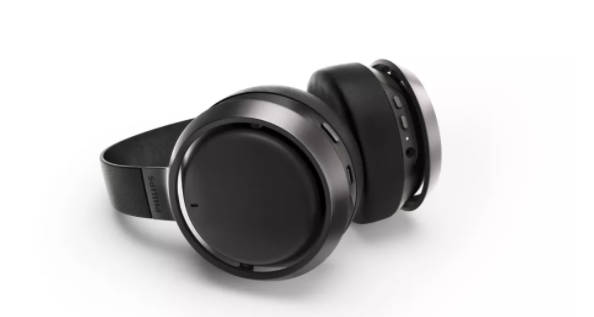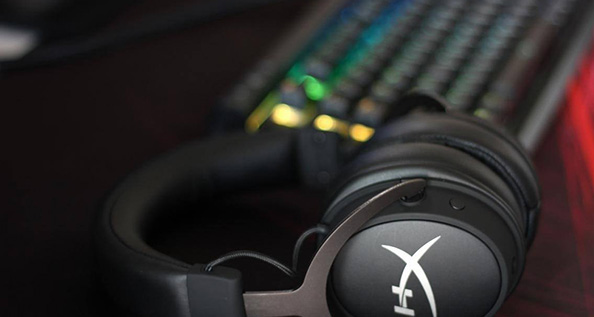HyperX Cloud Alpha S Review
Solid gaming audio with adjustable bass
The $129.99 Cloud Alpha S gaming headset is HyperX's attempt to inject some more power and appeal into the unassuming Cloud Alpha by adding a 7.1-channel USB sound card and a set of switches on the earcups that can boost bass response, all for just $30 more. The upgrades work as advertised, but the Cloud Alpha S maintains the same mids-focused, unsubtle sound signature of the Cloud Alpha, and the additional bass isn’t enough to really bring the thunder.
Design
The Cloud Alpha S looks and feels very similar to other HyperX headsets we’ve tested, with large, Y-shaped metal arms that connect each oval earcup to the headband. The headset is available in black with blue arms and stitching on the headband, or in all black.
Each earcup features comfortable memory foam padding wrapped in faux leather, with matching padding on the underside of the headband. An alternate set of fabric-covered earpads are included, which isolate less sound (which means less bass) than the faux leather, but produce less warmth over time. Regardless of the earpads you use, the headset provides a solid, snug fit.
The earcups each feature a three-way sliding switch on the back edge, letting you set how much bass the headset delivers by exposing one or two small bass radiators. The switches appear to just change how much air pressure each earcup vents, which can enhance the impression of bass but doesn’t actually change the output of the 50mm, dual-chamber drivers. The bottom of the left earcup also holds the connectors for the detachable boom mic and the 3.5mm headset cable.
Connectivity
The wired Cloud Alpha S can work with any modern game console through its fabric-wrapped, three-foot headset cable. However, if you use the headset like this, it won’t perform much differently from the less expensive Cloud Alpha.
The big appeal of the Cloud Alpha S is the included USB external surround sound card, mounted on a 6.6-foot fabric-wrapped cable to provide simulated 7.1-channel surround sound to the headset. The sound card is almost all cable, with a USB plug on one end and a small, rectangular remote on the other. The remote holds the audio processing electronics, along with a large button that lights up with 7.1 when the simulated surround is enabled. Four buttons around the surround control adjusts master volume and game/voice mix. The sound card features a shirt clip on the back, if you want to keep it on your collar or attached to a pocket while you play.
Microphone
The headset's mic is very good, picking up my voice clearly in test recordings. It sounds clean, though it can get slightly sibilant if you keep it too close to your mouth, even with the wind filter. It works just as well as the Cloud Alpha’s microphone, and should satisfy most basic needs for voice chat and calls. However, if you're serious about recording or streaming, you should consider a dedicated USB microphone.
Audio Performance
The bass switches on the Cloud Alpha S can produce a slightly more powerful sense of sub-bass response, but not enough to rattle your head no matter what setting you use. In our bass test track, The Knife’s “Silent Shout,” the bass synth and kick drum sounded poppy but fairly light with the bass switches closed, and produced some solid resonance with the switches open. The thumps aren’t palpable, but they also don’t distort even at maximum volume levels.
Like the regular Cloud Alpha, the Cloud Alpha S has a very mids-focused sound, lacking much power in the lows or delicate subtlety in the highs. In the opening to Yes’ “Roundabout,” the acoustic guitar plucks get a solid amount of string texture and good resonance, but they don’t get quite the amount of high-frequency presence and finesse we like to hear. When the song fully kicks in, the electric bass stays slightly in the front of the mix, letting the guitar strums and vocals settle a bit in the background. It isn’t a wildly unbalanced sound, but the focus on the mids without sculpting for the lows and highs doesn't make for the most compelling listening experience.
The lack of high-end presence comes through in The Crystal Method’s “Born Too Slow.” The opening guitar riffs sound slightly underpowered, and while the backbeat gets enough attention to anchor the track, it doesn’t have quite the ominous, driving low-end thump it should. The shrieking vocals come through clearly, but once again the mids are the most prominent aspect of the mix, lacking in the farther reaches of the frequency range.
Playing Doom (2016) with the Cloud Alpha S is satisfying, with the guns, rockets, and demon snarls sounding appropriately powerful, with plenty of low-mid presence. The headset doesn’t reach low enough into the sub-bass to really sound thunderous, but it’s full and loud, with plenty of midrange detail. Mick Gordon’s industrial metal score sounds excellent through the headset, with all of the music’s sinister sludginess coming through.
The simulated 7.1-channel surround sound through the USB sound card helps make Doom sound very large, but it doesn’t particularly enhance directional imaging. The headset’s balance lacks much in the way of higher frequencies to really stand out and pinpoint, though the sounds of demons and explosions come through clearly, with some solid left-right panning. The effect produces a large sound field through the headphones, but don’t expect much in the way of tactical benefits.
Capable, but Not a Major Improvement
The HyperX Cloud Alpha S adds a 7.1-channel simulated surround sound card and some bass power to the original Cloud Alpha, for a $30 premium over the older headset. It offers a powerful sound, but the mids-heavy focus neither rattles the head nor provides very detailed high-frequency response. It’s certainly not a bad headset, but it faces plenty of competition around its price range.
For the same price, the Logitech G Pro X also offers a simulated surround experience with better high-end finesse and a microphone equipped with extensive customization options thanks to Blue Microphones. If you want to spend a bit less, the Razer Kraken Tournament Edition offers surround sound and powerful bass for $100, as does the wireless Razer Nari Essential. As for HyperX’s own offerings, the pricier Cloud Mix features much better audio balance and Bluetooth connectivity, while the much more expensive Cloud Orbit S uses motion tracking to deliver really compelling surround sound.




